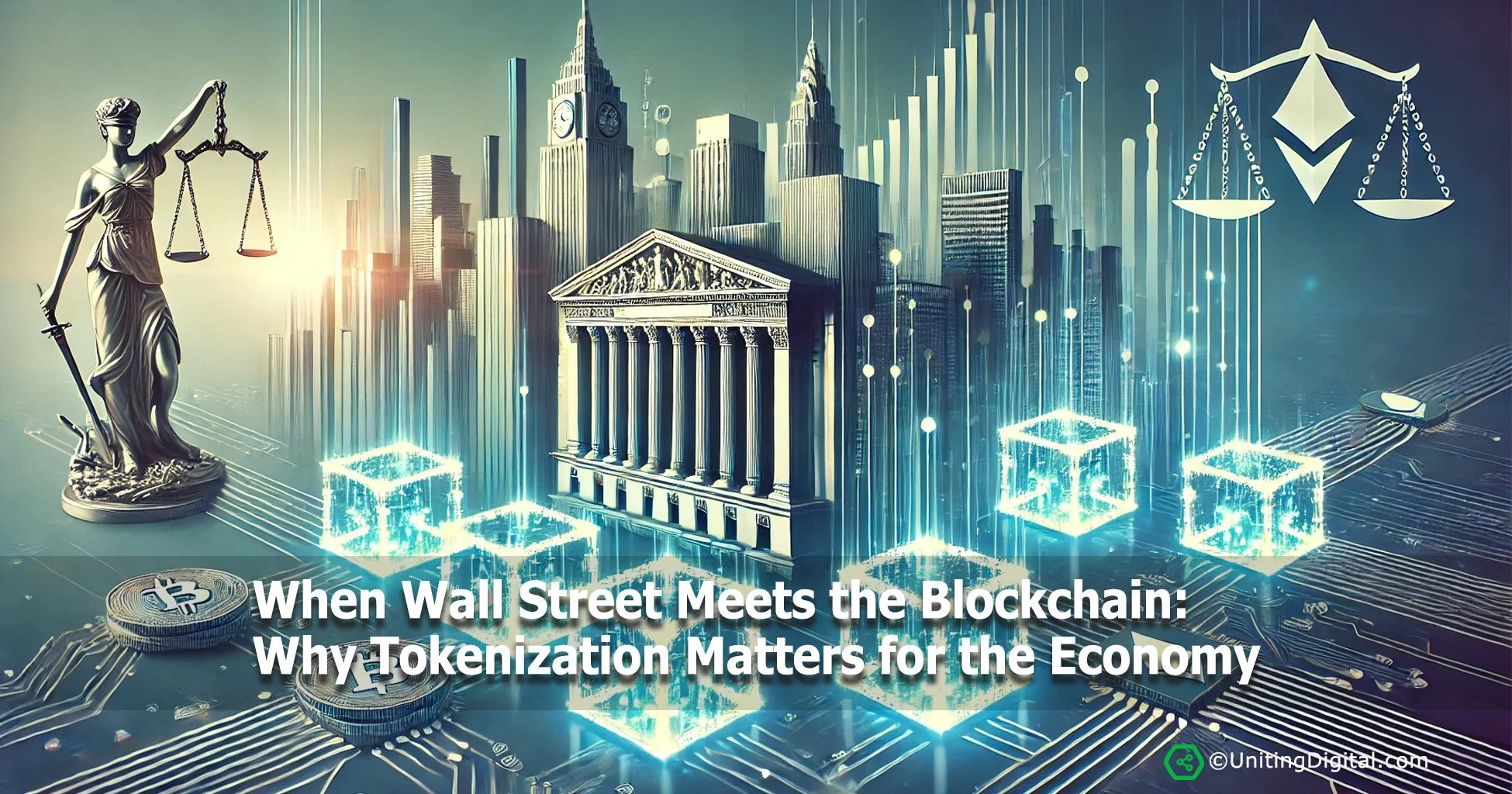When Wall Street Meets the Blockchain: Why Tokenization Matters for the Economy
Building the Future of Finance
If the DTCC and Nasdaq were wired directly into a public blockchain, you would see the blueprint of where markets are headed. The most economically consequential crypto development right now is not an exotic new DeFi yield farm, it is the prospect of regulated, on-chain trading of tokenized assets under a U.S. Securities and Exchange Commission initiative widely described as “Project Crypto.” If realized, this would move securities plumbing from batch, business-hour systems to continuous, programmable rails, shrinking settlement windows, unlocking collateral, and changing how trillions of dollars flow through the economy.
What happened (and why it matters)
On July 31, 2025, the SEC unveiled “Project Crypto,” a directive to overhaul outdated securities rules and enable on-chain trading of tokenized assets. The signal is clear: the regulator is contemplating a pathway where registered, compliant assets such as equities, funds, and even private credit can natively live and trade on blockchain infrastructure. That is not crypto adjacent, it is capital markets reform.
The potential economic impact dwarfs typical “coin news.” Capital markets are the circulatory system of the economy. When you compress settlement (T+2 → T+0 or near-zero) and make assets programmable, you reduce counterparty risk, margin needs, and capital locked in settlement chains, freeing cash for lending, investment, and operations.
The economic math: from frictions to flywheels
Working capital unlocked: Faster finality means less cash trapped in clearing, improving corporate liquidity and lowering the cost of capital.
Risk and collateral efficiency: Real-time settlement and programmable collateral cut exposure windows. That lowers systemic risk and allows more precise margining, a boon for broker-dealers, prime brokers, and funds.
24/7 market optionality: On-chain venues do not close. While regulators can still define trading hours, the technical possibility of continuous markets expands liquidity design, price discovery, and cross-border participation.
Market structure competition: If tokenized assets can move across chains or L2s, clearing and custody unbundle, inviting competition that drives down fees and spurs product innovation.
Why now? The rails are forming
A parallel development strengthens the case: stablecoin-centric, enterprise-friendly chains. TLDR reports Circle announced “Arc,” an EVM-compatible L1 where USDC is the native gas. Whether Arc or another network wins, the design pattern is unmistakable: regulated payments combined with asset tokenization on composable infrastructure. That is a natural fit for compliant secondary trading and instant settlement of tokenized securities.
Put differently, the SEC is contemplating modern rules as the industry finally offers credible, auditable rails to meet them.
Lessons for leaders and allocators
Treat blockchain as market infrastructure, not a product feature. The upside is not just “faster transfers,” it is working capital rotation, risk compression, and new issuance formats (for example, instant-settling commercial paper and programmable dividends).
Expect a “hybrid first” era. Early deployments will likely anchor on permissioned or whitelisted environments, bridging to public chains for programmability and interoperability, similar to hybrid cloud before full cloud native took hold.
Compliance UX is the unlock. KYC/AML, transfer restrictions, and audit trails must be encoded at the token layer. Winners will ship developer-friendly compliance primitives that feel like Stripe for securities rules.
Follow the stablecoin plumbing. If cash legs move in regulated stablecoins, DvP (delivery versus payment) can be atomic, reducing fails and reconciliation costs across the trade lifecycle.
Cross-domain parallels
Cloud → Capital markets: Cloud did not win on cost alone. Automation, reliability, and platformization were decisive. Tokenized markets will rhyme, with lower friction plus platform effects for issuers, brokers, and data providers.
Payments → Securities: Just as real-time payments changed treasury operations, real-time settlement will transform treasury, collateral, and risk. Think ISO 20022 meets smart contracts.
Chips and networks: As tokenization scales, demand rises for secure enclaves (TEEs), HSMs, and high-throughput consensus. This becomes a tailwind for certain semis and secure compute or edge setups in financial data centers.
Risks and realities
Regulatory scope creep: If the bar to list or trade on-chain is too high, innovation migrates offshore. If too low, market quality and investor protection suffer. Striking the middle is difficult and politically charged.
Liquidity fragmentation: Multiple chains or permissioned venues can split order flow. Interoperability standards and consolidated tape-like solutions will be critical.
Operational readiness: Most incumbents run batch-based back offices. Retooling for real-time, ledger-native operations requires major changes in ERP, risk systems, and governance.
What to watch next
Pilot programs or sandboxes involving regulated stablecoins as cash legs and whitelisted tokenized securities, the first credible DvP loops.
Custody and transfer agents evolving into token registrars with compliance APIs.
Issuer adoption in private markets first (credit, funds), followed by public market experiments as standards mature.
Conclusion
If “Project Crypto” advances from talking point to rulemaking and pilots, the United States may catalyze the on-chain modernization of capital markets. This is a change measured not in basis points of trading fees but in billions of dollars of unlocked liquidity and risk reduction. That is not a crypto story, it is an economic productivity story that happens to run on blockchains.
About the Author
Arthur Wang

